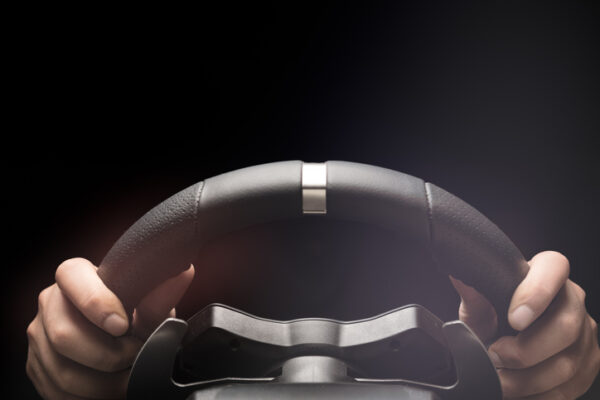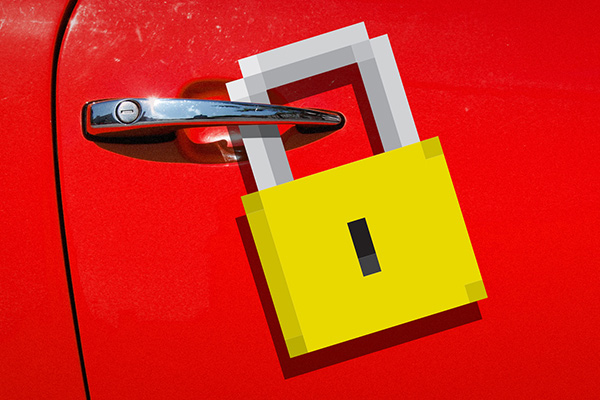Does the thought of parallel parking grind your gears? Not to worry: automakers are striving to alleviate your stress when it comes to fitting into tight spaces. Numerous manufacturers offer advanced technology features whereby the car does the tricky maneuvering for you. Sometimes called “active park assist” or “auto park,” these high-tech systems allow your vehicle to essentially park itself in a parallel or perpendicular parking space with the push of a button.
A History
Lexus was the first manufacturer to offer an automated parking feature, setting off a consumer and media frenzy when the self-parking LS 460 sedan was unveiled at the Detroit International Auto Show in 2006. The Advanced Parking Guidance System used a sonar sensor on the front bumper to measure the length of the space and distance from the cars. The driver put the car in reverse, which activated the rearview camera on the in-dash display. Pressing the parallel park icon on the touchscreen placed a green indicator square over the parking space, allowing the driver to go hands-free. The steering system then took over and angled the car into the parking space, with the driver applying the brake to slowly ease the car backward and stop once the display indicated close proximity to the other car’s bumper.
In recent years, other manufacturers have introduced their own self-parking systems and evolved and improved upon the original technology, which becomes more sophisticated with each rollout. The 2016 Lincoln MKZ boasts that that you can parallel park your car in as few as 24 seconds. Ford, Audi, Toyota, Volkswagen, Jeep, and BMW are among the adopters of self-parking technology. The systems operate in an essentially similar fashion, utilizing computer sensors to locate open parking spots based on intelligent estimation of the proximity to other vehicles. The sensors then direct the steering wheel to parallel park the car, with the driver only using the gas and brake to control speed.
A Look into the Future
Driver-assist technologies are hinting at a cool future in automated driving. Ford is experimenting with a fully assisted parking aid technology that lets customers park their car by remote control. The Ford Edge Concept utility vehicle lets the customer wait until the vehicle has pulled out of a tight parking spot before climbing into the car. Some manufactures are incorporating smartphones and smartwatches into the parking process. The BMW i3 concept model uses a Remote Valet Parking Assistant to scout a parking spot on its own through a vocal prompt to a smartwatch app. It uses mapping technology and lasers to guide the car to an empty space, even in multi-level garages.
Putting Self-Parking Technology To The Test
Automakers are hoping self-parking technology trends mainstream. However, drivers aren’t quite ready to relinquish control of their cars.
A 2015 survey found that only one in four drivers would trust self-parking technology, and 80 percent are confident in their own parallel parking skills. However, self-parking cars performed very well when the following five vehicles were put to the test:
- BMW i3
- Lincoln MKC
- Mercedes-Benz ML400 4Matic
- Cadillac CTS-V Sport
- Jeep Cherokee Limited
The technology outperformed manual parking when comparing closeness to the curb, number of maneuvers, speed, and number of curb strikes. This is not to say that the system is flawless; some systems parked the cars disconcertingly close to the curb (half-inch, in some cases). Most human drivers leave about 8 inches of space between the curb and the wheels, giving a space buffer when exiting a spot and lessening chances of tire scratches and damage to tires and wheel wells.
Is a self-parking car right for you? It depends on your lifestyle and budget. If you live in the city or need to parallel park on a regular basis, you might find the feature makes parking easier and less of a hassle. Older drivers and those with certain physical mobility restrictions may also appreciate no longer needing to twist their upper body when looking over their shoulder to park. Cost is also a factor, starting at about $400-500 for the basics to thousands of dollars for high-end technology packages.
By Stephanie Levis
Read more: How to Parallel Park Like a Pro









Mason Holmes says,
Lincoln Continental is the greatest of all vehicles. I owned Continental IV, Lincoln Continental President Series, #2: Town Car ,2012 Taurus
shaun f skeffington says,
What is average cost to have park assist on a car?
car trends says,
thanx for sharing this article Driver-assist technologies are hinting at a cool future in automated driving
Robert David Shelton says,
Great ideal but nothing is Flaeless. If there a Accident who is responsible .The consumer or The Manufacturer ??????. I own a 2007 Nissan Altima , 3.5 SL Auto sedan ,270 HP. — V6. With all optional equipment. 73,245.3 Miles. ( ” I STILL Don’t Trust My parking sensor ” ) Take care your car , It will take care or YOU.
Marsden says,
Great
Rosa S says,
I like so cool, l hope subscrite to program.
Hiroko Gruson says,
I wish to subscrite to such program.
Jaime says,
Great need to be affordable to low income people.
leonardo querra says,
great
Atiq Ebadi says,
I think it’s a great idea!
Joyce says,
Mercedes was left out of the list. A greatconcept! As more and more manufacturers add this feature to more models the price should come down some. That’s when I will consider purchasing this type of system.
Annadale says,
Cool, especially for people with limited upper body movement.
Roni says,
Funny everyone thinks this is new, when in early 1970’s a Major company already had it developed. My dad would tell me, he workedon it then, and only now is it fully out there.LOL
Linda says,
Not for me
Lilly mcgill says,
Great